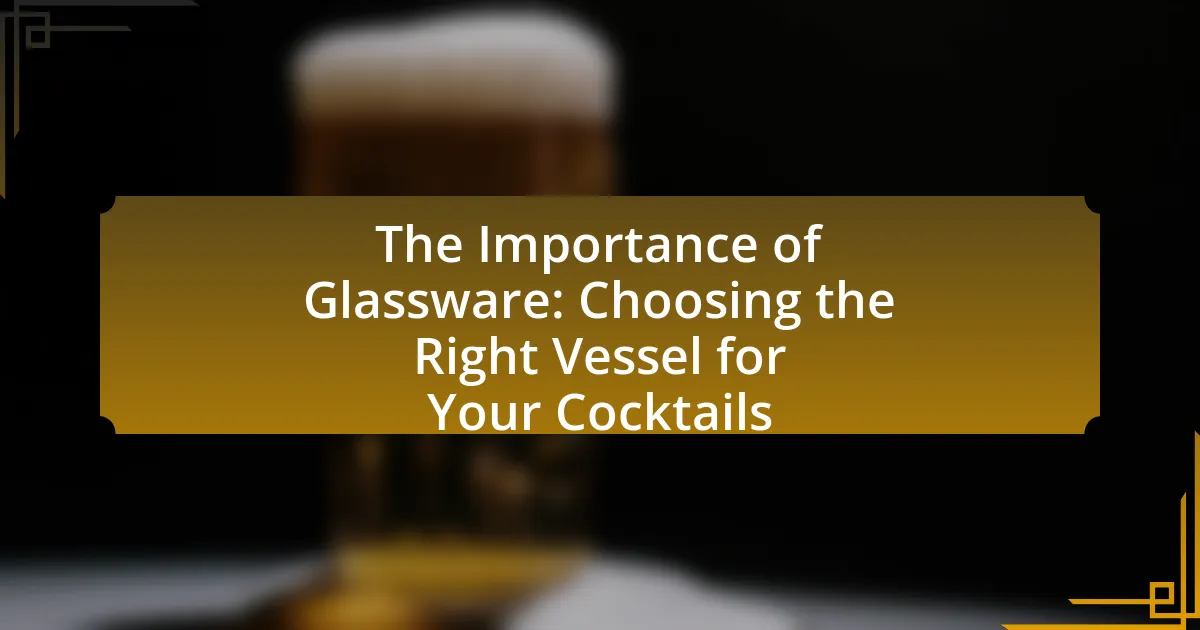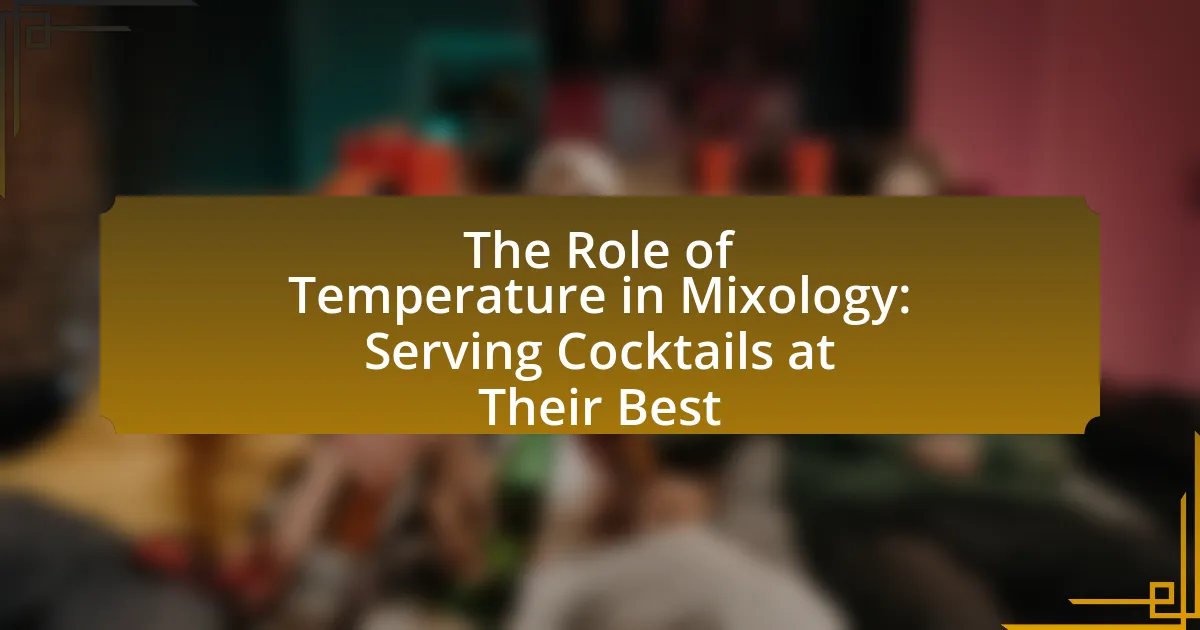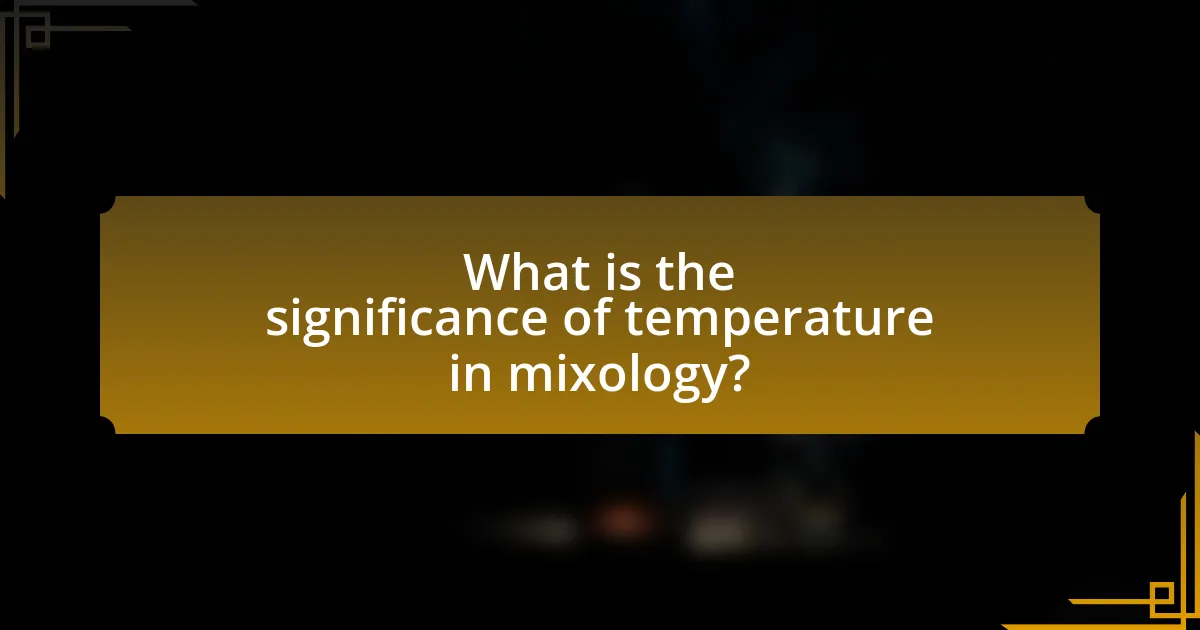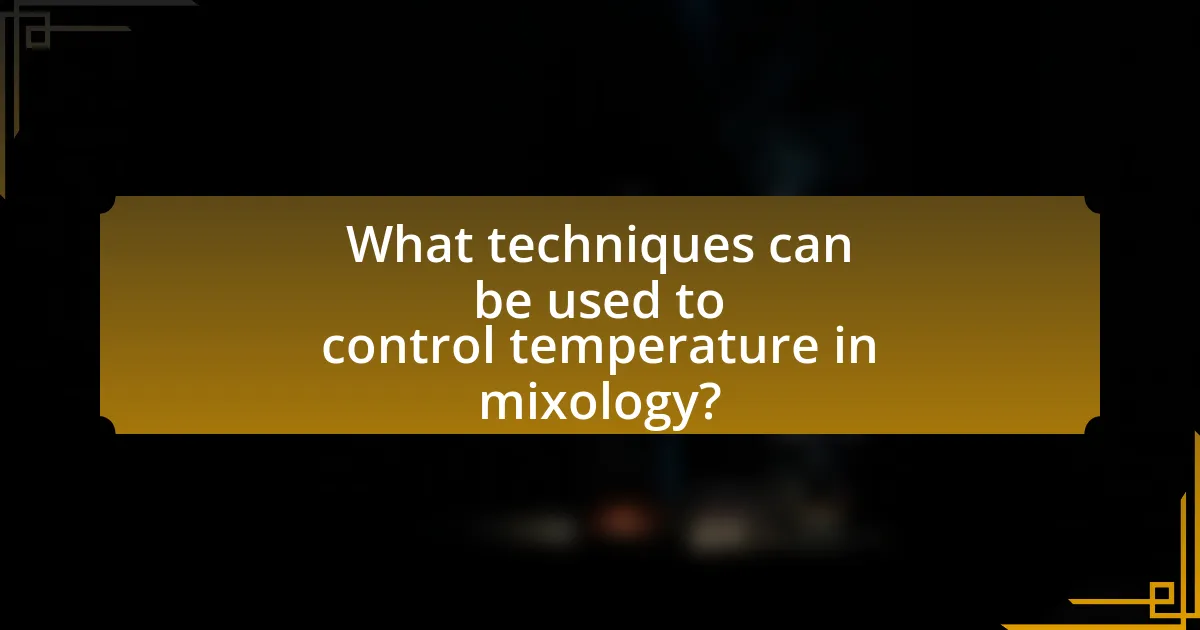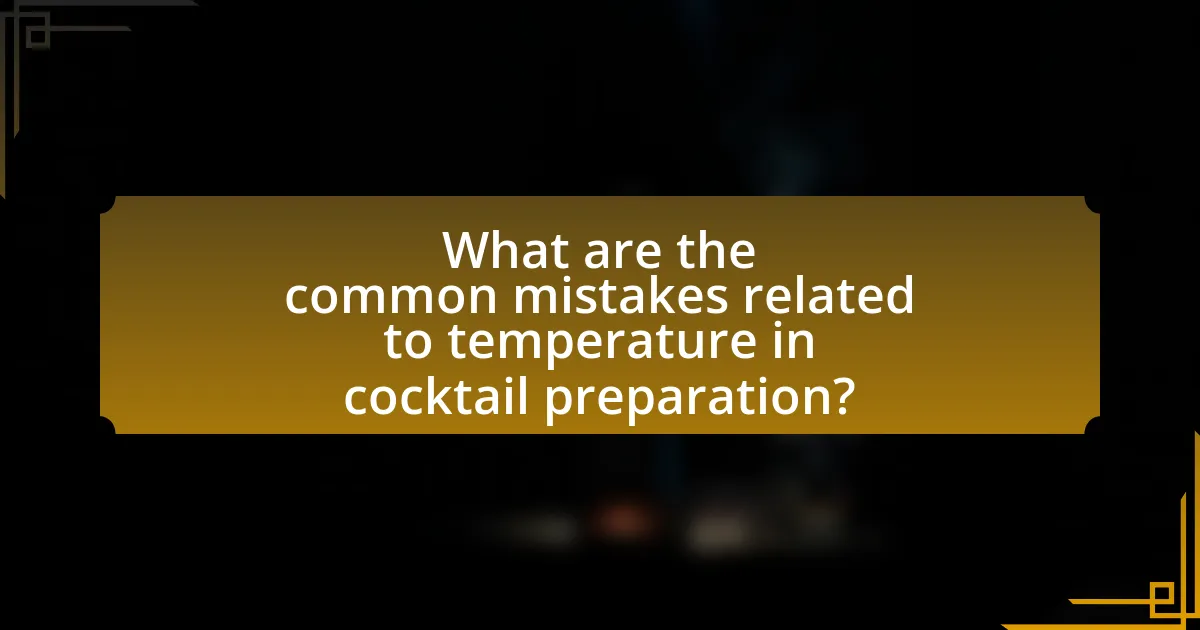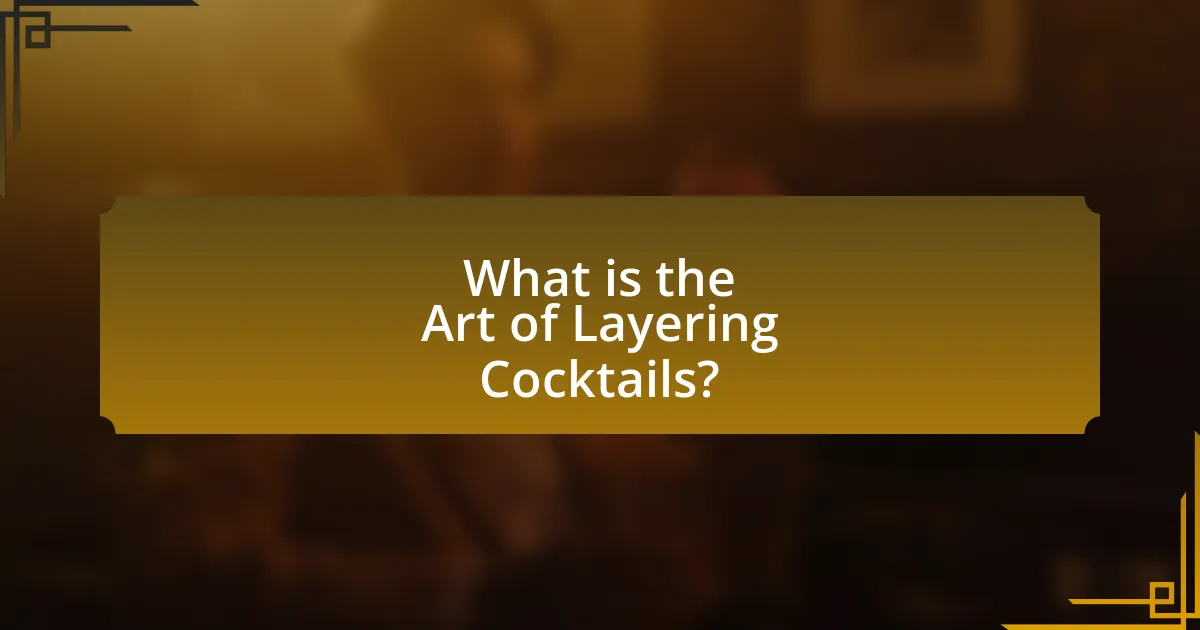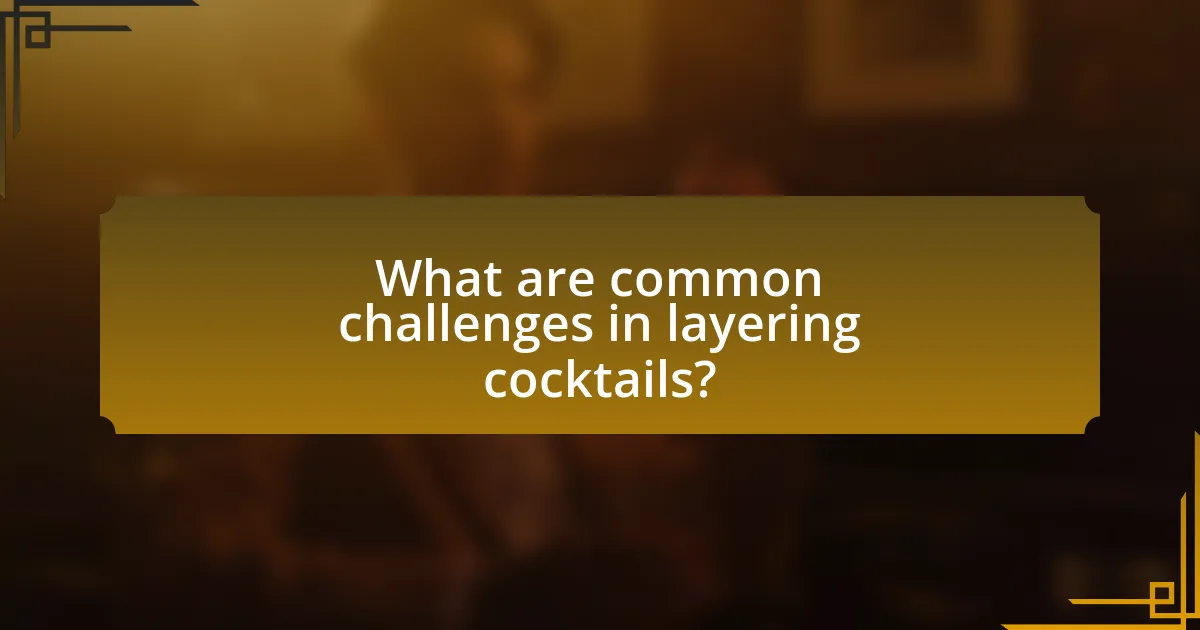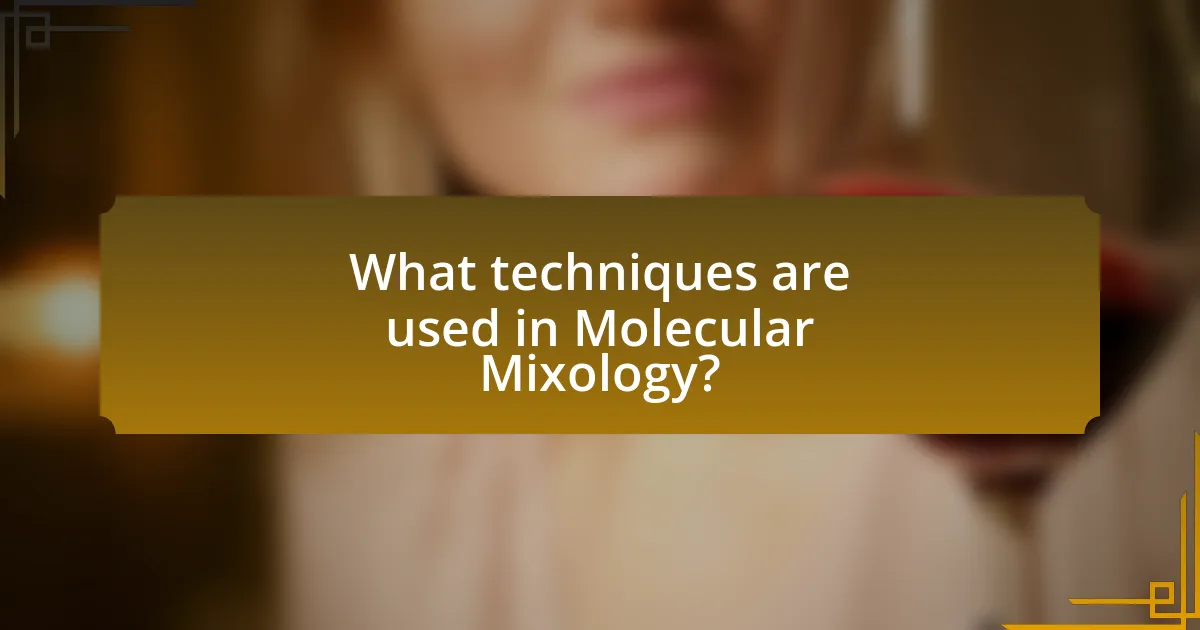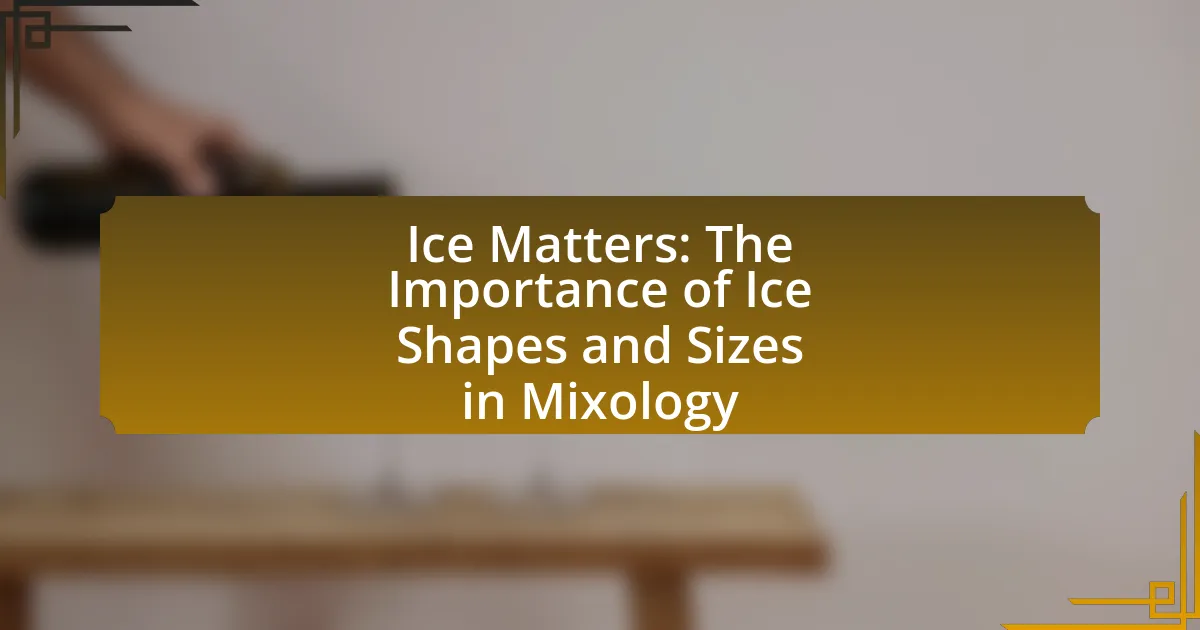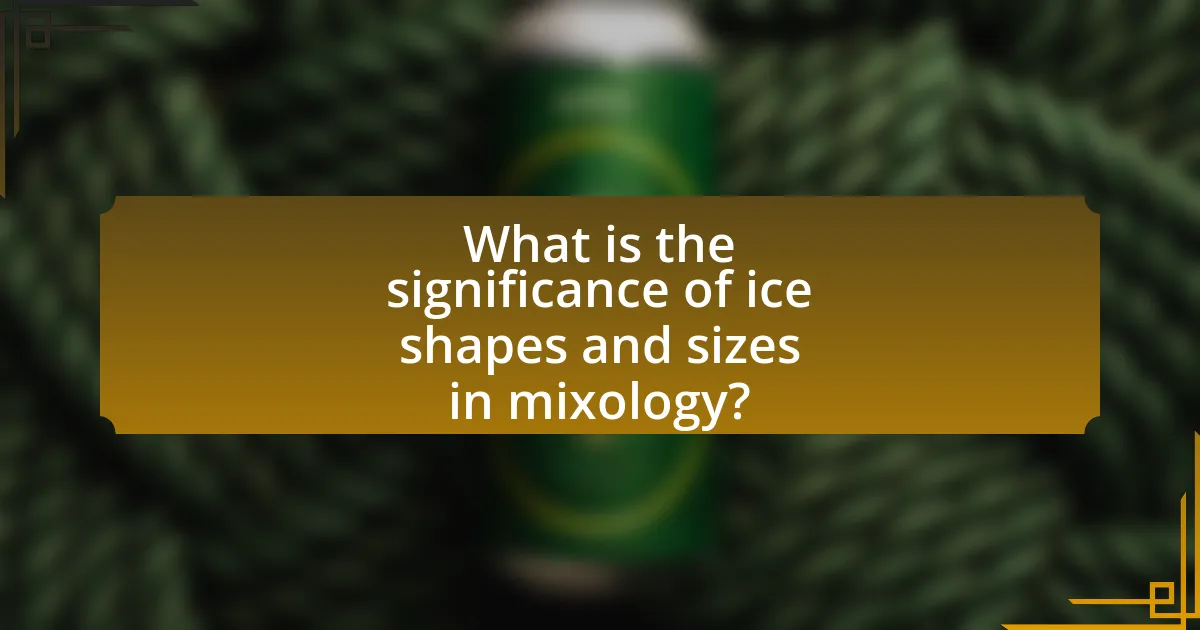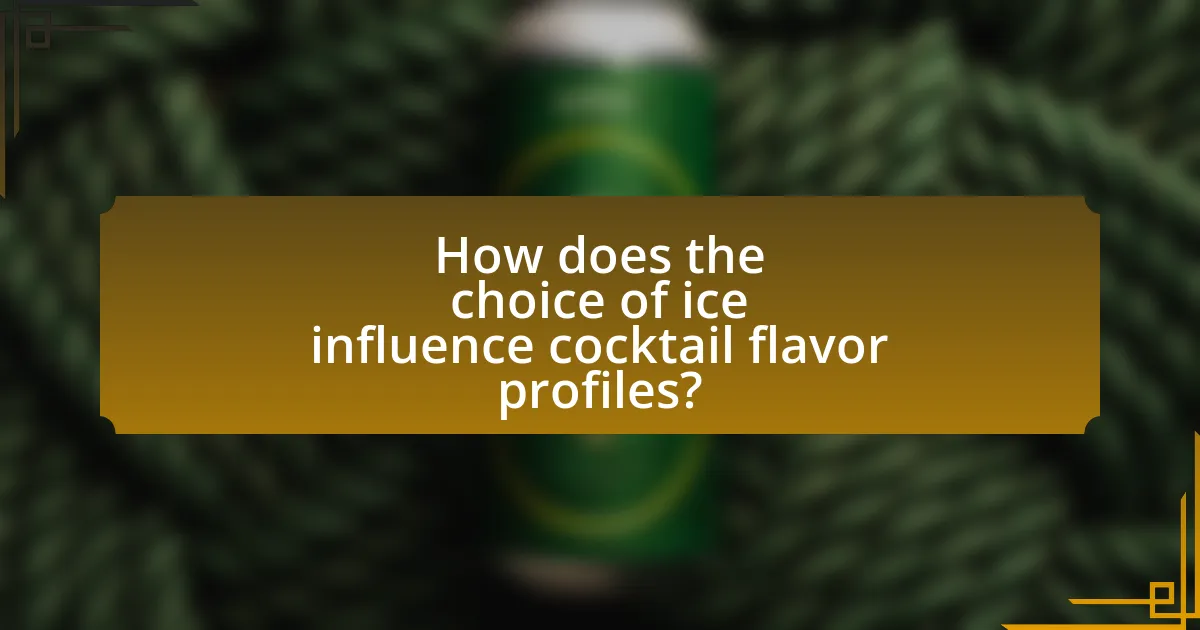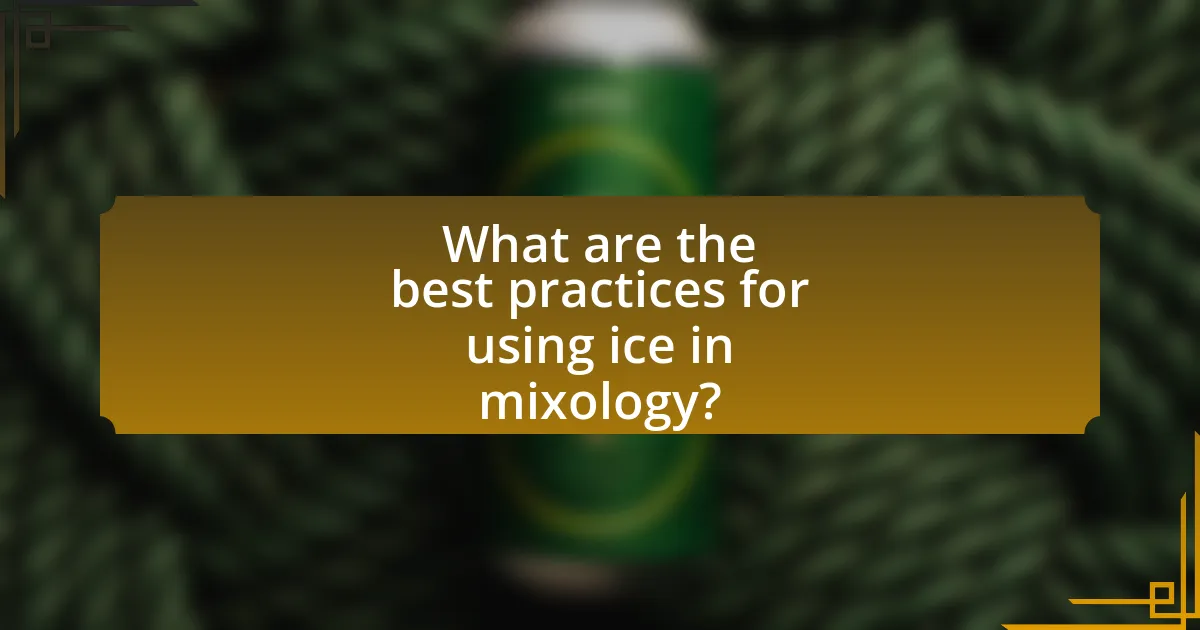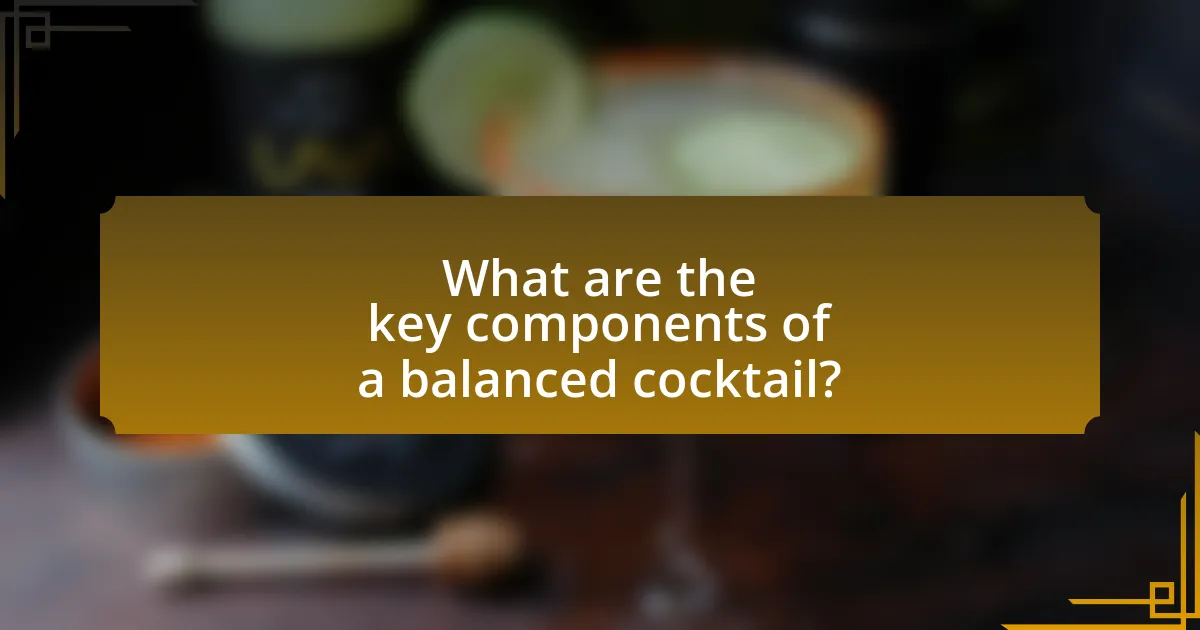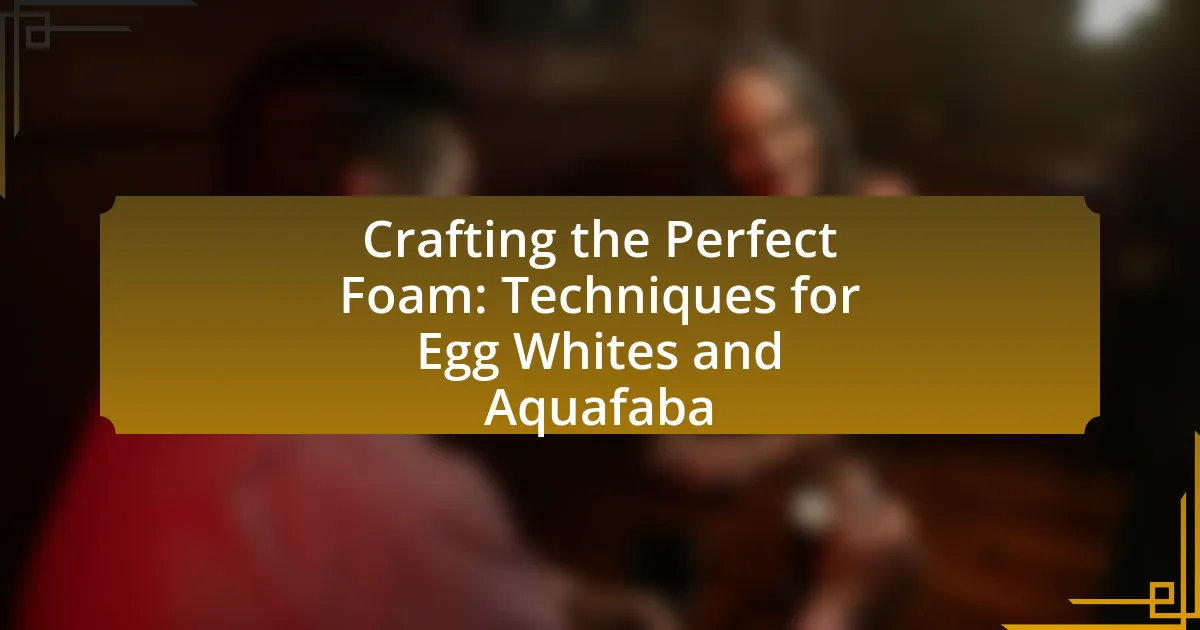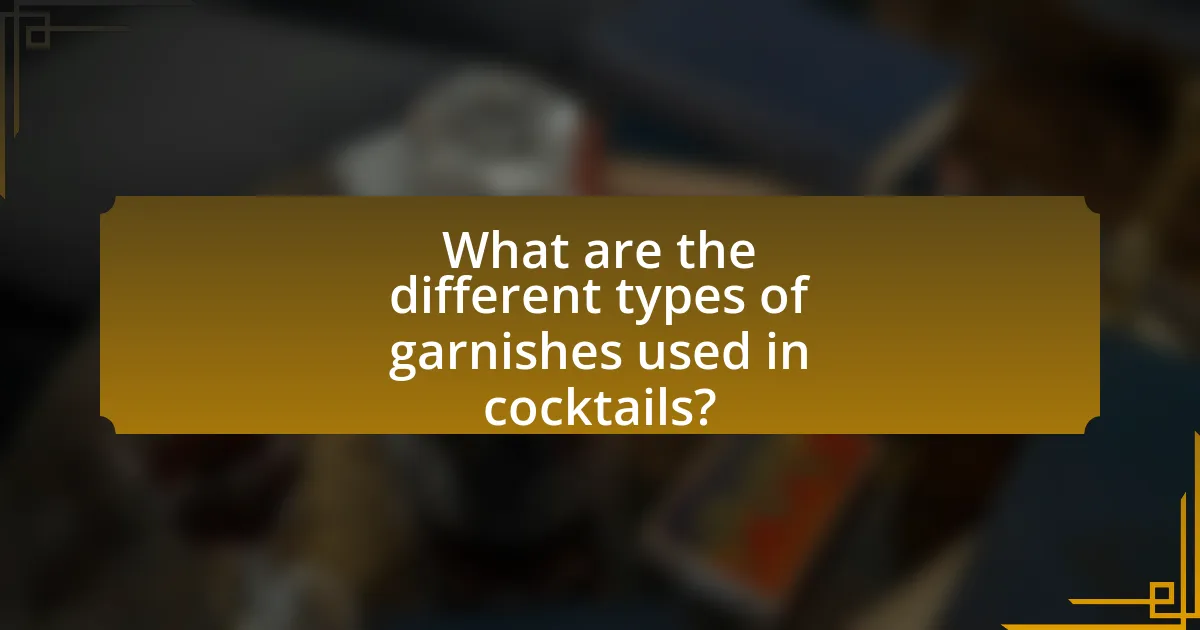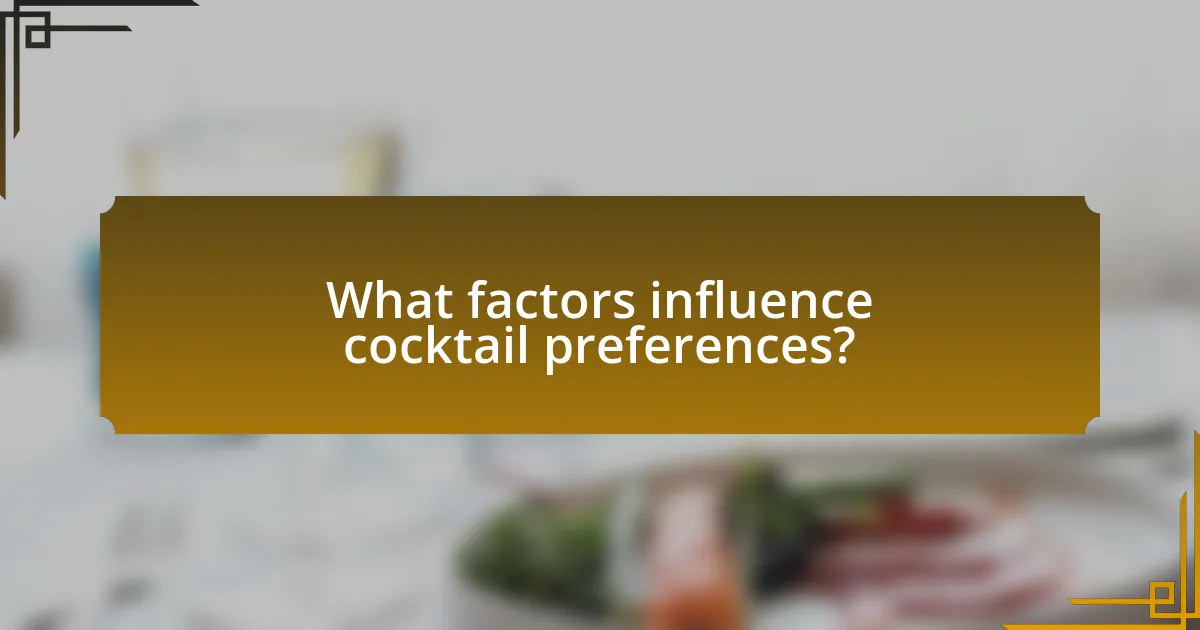The article focuses on the science of infusions and their role in creating unique flavors for cocktails. It explains the infusion process, which involves extracting flavors from ingredients like fruits, herbs, and spices by steeping them in alcohol, thereby enhancing the complexity and depth of cocktails. Key topics include common ingredients used for infusions, various infusion techniques such as cold and hot infusion, and the importance of unique flavors in modern mixology. Additionally, the article provides practical tips for creating signature infusions, balancing flavors, and best practices for storing infused spirits.

What are Infusions and How Do They Enhance Cocktails?
Infusions are the process of extracting flavors from ingredients such as fruits, herbs, or spices by steeping them in a liquid, typically alcohol, to create a flavored spirit. This technique enhances cocktails by adding depth and complexity, allowing for unique flavor profiles that can elevate the overall drinking experience. For example, infusing vodka with jalapeños can create a spicy base for a cocktail, while infusing gin with botanicals can enhance its aromatic qualities. The infusion process can take anywhere from a few hours to several weeks, depending on the desired intensity of flavor, and is supported by the principle that alcohol acts as a solvent, effectively drawing out the essential oils and compounds from the ingredients.
How do infusions work in the context of cocktails?
Infusions in cocktails involve steeping ingredients, such as fruits, herbs, or spices, in a base liquid, typically alcohol, to extract and enhance flavors. This process allows the alcohol to absorb the essence of the added ingredients, resulting in a unique flavor profile that can elevate the cocktail experience. For example, a common infusion is using fresh strawberries in vodka, where the vodka takes on the sweet and fruity notes of the strawberries over time. The effectiveness of infusions is supported by the principle of solubility, where alcohol acts as a solvent, effectively drawing out flavors and aromas from the solid ingredients.
What ingredients are commonly used for infusions?
Common ingredients used for infusions include herbs, fruits, spices, and botanicals. Herbs such as basil, mint, and rosemary are frequently utilized for their aromatic properties, while fruits like citrus, berries, and apples add sweetness and acidity. Spices such as cinnamon, ginger, and cardamom contribute warmth and complexity, and botanicals like lavender and chamomile provide unique floral notes. These ingredients are chosen for their ability to impart distinct flavors and aromas, enhancing the overall profile of cocktails.
How does the infusion process alter the flavor profile of spirits?
The infusion process significantly alters the flavor profile of spirits by allowing the extraction of flavors from various botanicals, fruits, or spices into the base spirit. This extraction occurs through the interaction of the alcohol with the soluble compounds present in the infusing ingredients, which can include essential oils, sugars, and acids. For example, when herbs like basil or fruits like strawberries are infused in vodka, the resulting spirit takes on the aromatic and taste characteristics of those ingredients, creating a more complex and layered flavor profile. Studies have shown that the infusion time and temperature can also impact the intensity and balance of flavors, with longer infusion times generally leading to stronger flavor extraction.
Why are unique flavors important in cocktail creation?
Unique flavors are important in cocktail creation because they enhance the overall drinking experience and differentiate cocktails in a competitive market. Unique flavors stimulate the palate, making cocktails more memorable and enjoyable, which can lead to increased customer satisfaction and loyalty. According to a study published in the Journal of Culinary Science & Technology, cocktails with distinctive flavor profiles are more likely to be perceived as innovative and appealing, thus attracting a wider audience. This emphasis on unique flavors also encourages creativity among mixologists, fostering a culture of experimentation that can lead to new trends and signature drinks.
How do unique flavors influence customer experience?
Unique flavors significantly enhance customer experience by creating memorable and distinct sensory interactions. When customers encounter unique flavors, they often associate these experiences with novelty and excitement, which can lead to increased satisfaction and loyalty. Research indicates that flavor variety can stimulate emotional responses, making the overall experience more enjoyable. For instance, a study published in the journal “Food Quality and Preference” found that consumers are more likely to return to establishments that offer innovative flavor combinations, as these flavors evoke curiosity and engagement. Thus, unique flavors not only differentiate products but also foster a deeper emotional connection between customers and brands.
What role do infusions play in modern mixology trends?
Infusions play a crucial role in modern mixology trends by enhancing the flavor profiles of cocktails through the extraction of essences from various ingredients. This technique allows mixologists to create unique and complex flavors that elevate the drinking experience. For instance, infusing spirits with fruits, herbs, or spices can result in distinctive cocktails that reflect seasonal ingredients or innovative combinations, catering to consumer preferences for artisanal and craft beverages. The growing popularity of craft cocktails has led to a significant increase in the use of infusions, as evidenced by the rise of bars specializing in house-made infusions, which often feature on menus to attract adventurous drinkers seeking novel tastes.
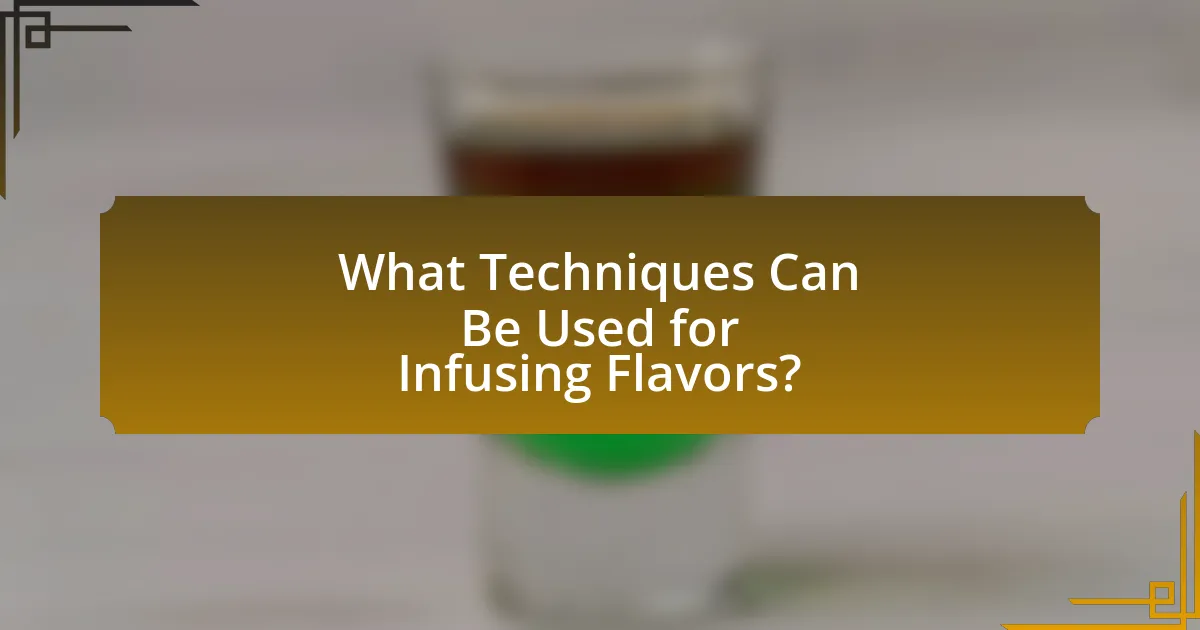
What Techniques Can Be Used for Infusing Flavors?
Techniques for infusing flavors include steeping, cold infusion, and using sous-vide methods. Steeping involves soaking ingredients like herbs or spices in a liquid, allowing the flavors to meld over time, commonly used in teas and syrups. Cold infusion, on the other hand, utilizes cold water or alcohol to extract flavors without heat, preserving delicate notes, often applied in cocktails for fresh herbal or fruit flavors. Sous-vide infusion involves vacuum-sealing ingredients with a liquid and heating them at a controlled temperature, which enhances flavor extraction while maintaining the integrity of the ingredients. These methods are supported by culinary practices that emphasize the importance of temperature and time in flavor development, ensuring that the resulting infusions are rich and complex.
What are the different methods of infusion?
The different methods of infusion include cold infusion, hot infusion, and vacuum infusion. Cold infusion involves steeping ingredients in a cold liquid over an extended period, allowing for delicate flavors to be extracted without heat. Hot infusion uses heat to accelerate the extraction process, typically involving boiling or simmering the ingredients in a liquid. Vacuum infusion employs a vacuum chamber to create a low-pressure environment, which enhances the infusion process by allowing liquids to penetrate the ingredients more effectively. Each method offers unique flavor profiles and extraction efficiencies, making them suitable for various cocktail applications.
How does cold infusion differ from hot infusion?
Cold infusion involves steeping ingredients in cold or room temperature liquid, typically over an extended period, which extracts flavors more gently and preserves delicate compounds. In contrast, hot infusion uses heated liquid to extract flavors quickly, often resulting in a more robust and intense flavor profile. The temperature difference affects the extraction rate and the types of compounds released; for example, heat can extract tannins and oils more efficiently, while cold infusion is better for preserving volatile aromatics and subtle flavors.
What are the advantages of using vacuum infusion?
The advantages of using vacuum infusion include enhanced flavor extraction, reduced infusion time, and improved clarity of the final product. Vacuum infusion accelerates the infusion process by creating a low-pressure environment that allows flavors to be extracted more efficiently from ingredients, resulting in a more intense and vibrant flavor profile. Additionally, the vacuum process minimizes the presence of air, which can lead to oxidation and spoilage, thereby preserving the freshness and quality of the infused liquid. This method also helps in achieving a clearer infusion by reducing the amount of sediment and particulate matter, leading to a visually appealing final product.
How long should ingredients be infused for optimal flavor?
Ingredients should typically be infused for optimal flavor between 30 minutes to 24 hours, depending on the type of ingredient used. For delicate ingredients like herbs, a shorter infusion time of 30 minutes to 2 hours is recommended to avoid bitterness, while more robust ingredients such as spices or fruits can benefit from longer infusions, ranging from 4 to 24 hours. Research indicates that the extraction of flavor compounds occurs at varying rates, with most flavors reaching their peak within these time frames, ensuring a balanced and rich infusion.
What factors affect infusion time?
Infusion time is primarily affected by factors such as temperature, surface area, and the type of ingredients used. Higher temperatures generally accelerate the infusion process, as heat increases the solubility of flavors. Additionally, a larger surface area of the ingredients, such as cutting fruits or herbs into smaller pieces, enhances the extraction of flavors, thereby reducing infusion time. The specific characteristics of the ingredients, including their natural oils and water content, also play a crucial role; for instance, herbs may infuse more quickly than denser fruits. These factors collectively determine how long an infusion should be left to achieve the desired flavor profile in cocktails.
How can one determine when an infusion is complete?
One can determine when an infusion is complete by assessing the flavor intensity and color of the liquid. The infusion process typically takes a specific duration, often ranging from a few hours to several days, depending on the ingredients used. For example, herbs and spices may infuse within a few hours, while fruits might require a longer period. A visual inspection of the infusion’s color can indicate extraction; a deeper hue often signifies that the flavors have been adequately infused. Additionally, tasting the infusion at intervals allows for a subjective evaluation of flavor strength, ensuring it meets the desired profile before straining and using it in cocktails.

What Are Some Popular Infusion Recipes for Cocktails?
Some popular infusion recipes for cocktails include cucumber-infused gin, jalapeño-infused tequila, and lavender-infused vodka. Cucumber-infused gin is made by steeping fresh cucumber slices in gin for 24 hours, resulting in a refreshing flavor ideal for summer cocktails. Jalapeño-infused tequila involves adding sliced jalapeños to tequila for a spicy kick, which can enhance margaritas. Lavender-infused vodka is created by steeping dried lavender flowers in vodka, providing a floral note that pairs well with lemonade or tonic water. These infusion methods allow for unique flavor profiles that elevate standard cocktails.
What are some classic infusion recipes to try?
Classic infusion recipes to try include herbal-infused vodka, fruit-infused gin, and spice-infused rum. Herbal-infused vodka can be made by steeping fresh herbs like basil or rosemary in vodka for several days, resulting in a fragrant spirit ideal for cocktails. Fruit-infused gin typically involves adding fresh fruits such as strawberries or citrus to gin, allowing the flavors to meld over a week, creating a refreshing base for various drinks. Spice-infused rum can be achieved by combining rum with spices like cinnamon or vanilla beans, which enhances the rum’s natural sweetness and complexity. These methods are rooted in traditional practices, where infusions have been used for centuries to enhance flavors in beverages.
How can herbs and spices be used in cocktail infusions?
Herbs and spices can be used in cocktail infusions by steeping them in spirits to extract their flavors, aromas, and essential oils. This process enhances the complexity and depth of the cocktail, allowing for unique flavor profiles. For example, basil can add a fresh, aromatic quality, while cinnamon can introduce warmth and spice. The infusion time can vary; typically, a few hours to several days is sufficient, depending on the intensity desired. Research indicates that the infusion process can significantly alter the chemical composition of the spirit, leading to a more nuanced taste experience.
What fruits work best for creating unique cocktail infusions?
Citrus fruits, berries, and stone fruits work best for creating unique cocktail infusions. Citrus fruits like oranges, lemons, and limes provide bright acidity and aromatic oils that enhance flavor profiles. Berries such as strawberries, raspberries, and blueberries add sweetness and vibrant color, while stone fruits like peaches and cherries contribute rich, juicy flavors. These fruits are commonly used in mixology due to their ability to release essential oils and sugars during the infusion process, resulting in complex and refreshing cocktails.
How can one create signature infusions for personal cocktails?
To create signature infusions for personal cocktails, one should start by selecting a base spirit, such as vodka, gin, or rum, and then choose complementary flavoring agents like fruits, herbs, spices, or botanicals. The infusion process involves combining the chosen ingredients with the base spirit in a sealed container and allowing it to steep for a specific period, typically ranging from a few days to several weeks, depending on the desired intensity of flavor.
For example, infusing vodka with fresh strawberries and basil can yield a refreshing and aromatic cocktail base. The infusion should be strained to remove solid ingredients before use. This method is supported by the fact that the alcohol extracts flavors and aromas from the added ingredients, creating a unique profile that enhances the cocktail experience.
What tips can help in experimenting with flavors?
To effectively experiment with flavors in cocktails, start by understanding the basic flavor profiles: sweet, sour, bitter, salty, and umami. Combining these profiles can create balanced and unique drinks. For instance, pairing citrus (sour) with herbs (bitter) can enhance complexity. Additionally, consider using seasonal ingredients, as they often provide the freshest flavors. Research indicates that fresh herbs and spices can elevate cocktails significantly, as noted in a study by the Journal of Culinary Science & Technology, which highlights the impact of fresh ingredients on flavor perception. Lastly, keep a flavor journal to document successful combinations and adjustments, allowing for systematic experimentation and refinement over time.
How can one balance flavors in a custom infusion?
To balance flavors in a custom infusion, one should start by identifying the primary flavor components and their intensity. This involves selecting a base ingredient, such as a spirit or tea, and then adding complementary flavors that enhance rather than overpower the base. For example, if using a citrus base, adding herbs like mint or spices like ginger can create a harmonious blend.
The key to achieving balance lies in the ratio of ingredients; a common approach is to use the rule of thirds, where one part is the base, one part is the primary flavor, and one part is a secondary flavor. Additionally, tasting throughout the infusion process allows for adjustments, ensuring that no single flavor dominates.
Research indicates that the human palate can detect five basic tastes: sweet, sour, salty, bitter, and umami, and balancing these can enhance the overall flavor profile. For instance, adding a touch of sweetness can counteract bitterness, creating a more rounded taste. This method is supported by culinary studies that emphasize the importance of flavor balance in food and beverage preparation.
What are the best practices for storing and using infusions?
The best practices for storing and using infusions include keeping them in a cool, dark place, using airtight containers, and labeling them with the date of preparation. Storing infusions in a refrigerator can extend their shelf life, while using glass containers prevents chemical reactions that can occur with plastic. Additionally, infusions should be used within a few weeks to ensure optimal flavor and freshness, as the potency can diminish over time. Properly stored infusions can maintain their quality for several months, but it is essential to check for any signs of spoilage before use.
How should infused spirits be stored for longevity?
Infused spirits should be stored in a cool, dark place to maximize their longevity. Exposure to light and heat can degrade the flavors and quality of the infusion over time. Glass containers with airtight seals are ideal for storage, as they prevent oxidation and contamination. Research indicates that proper storage conditions can extend the shelf life of infused spirits significantly, often maintaining their quality for up to a year or more when stored correctly.
What are common mistakes to avoid when infusing flavors?
Common mistakes to avoid when infusing flavors include using overly strong ingredients, which can overpower the final product, and not allowing sufficient time for the infusion process, leading to weak flavor profiles. Additionally, failing to strain the infusion properly can result in unwanted sediment and cloudiness, while using low-quality base liquids can diminish the overall taste. Research indicates that optimal infusion times vary by ingredient; for example, herbs typically require shorter infusion periods compared to fruits, which can take several days for full flavor extraction.

